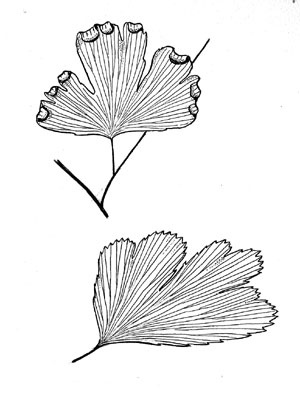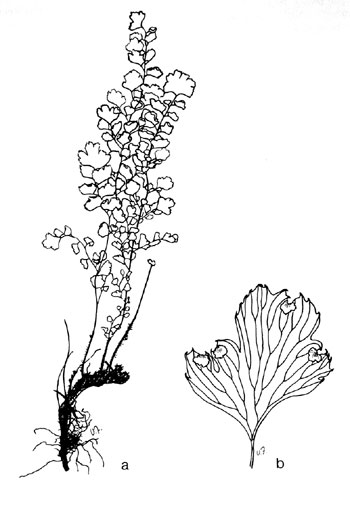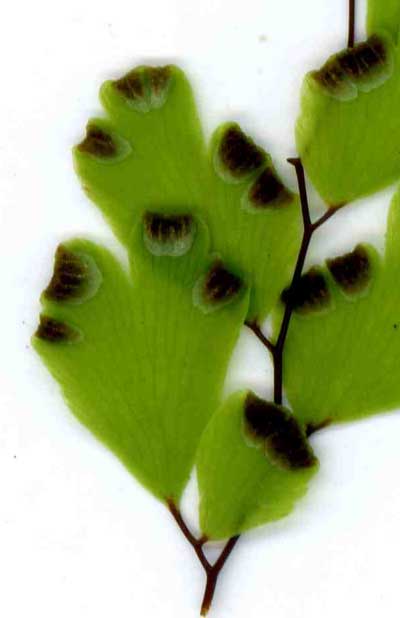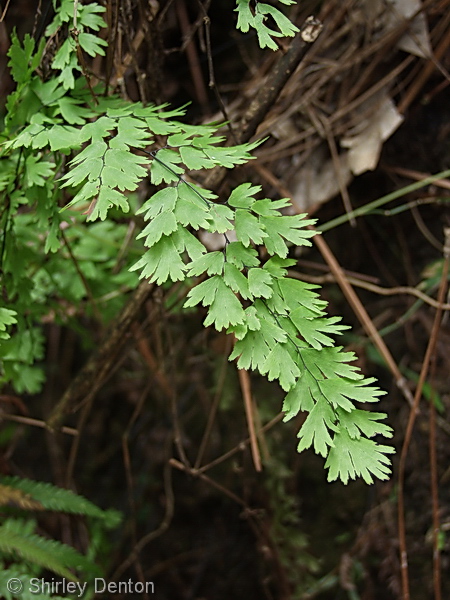| Adiantum capillus-veneris | ||
Venus's-hair fern, southern maidenhair | ||
|
Etymology
Capillus is from the root word for hair; veneris refers to the goddess Venus. Thus it is the Venus-hair fern.
Description
Rhizome: short-creeping, branching, slender, scales golden brown to medium brown, iridescent, margins entire or occasionally with single broad tooth near base.
Frond: 30 cm high by 15 cm wide, deciduous, monomorphic, blade/stipe ratio: 3:2. Stipe: dark purplish to nearly black, grooved above, scaly at base, glabrous in upper portion, 2 mm diam., vascular bundles: 1 or 2. Blade: 2-pinnate or sometimes more at the base, ovate or triangular, with a terminal pinna similar to the terminal pinnules of the pinnae, membranaceous, glabrous. Pinnae: 7 to 9 pair, lanceolate, to 8 cm, anadromous in plan; pinnules fan-shaped, rhombic, or round with marginal teeth; costae dark color merging gradually into the lamina; margins fertile lobed, sterile toothed; veins free, forking. Sori: sporangia, submarginal, indusium: false, inrolled margins, oblong at the ends of segments/pinnules, sporangia: yellow or yellowish brown, maturity: spring to summer. Culture
Habitat: moist calcareous cliffs, banks, and ledges along streams and rivers, walls of lime sinks.
Distribution: cosmopolitan in warm-temperate and subtropical regions.
Hardy to -15�C, USDA Zone 7.
Synonyms
Adiantum capillus-veneris var. modestum (L. Underwood) Fernald Adiantum capillus-veneris var. protrusum Fernald Adiantum capillus-veneris var. rimicola (Slosson) Fernald Adiantum affine Willd. |
|
|

Adiantum capillus-veneris. Segments. �Illustration by Edgar Paulton, from How to Know the Ferns and Fern Allies, John T. Mickel, � 1979 Wm. C. Brown Co. |

Adiantum capillus-veneris. a) frond and rhizome, b) fertile pinnule. �Illustration by V. Fulford from Ferns and Fern Allies of Canada, William J. Cody and Donald M. Britton, 1989, � Agriculture Canada, used with permission. |

Adiantum capillus-veneris. Segments with transparent false indusia and near ripe sori. �Scan: Tom Stuart |
